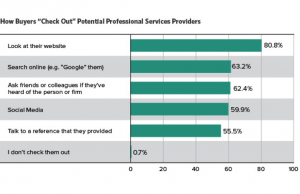— June 6, 2018

Many volumes of work have been written about the practices and strategies that differentiate great leaders from mediocre ones. While there are sometimes insights to be gained, most usually miss the point by focusing on notable personalities or generalized “types” of leaders rather the specific competencies that make certain approaches to leadership more effective.
In my research and experience working with some of the most successful global companies, I’ve discovered it really comes down to agility, or how well a leader is able to balance many choices and challenges simultaneously. Agile leadership is the ability to keep a company running smoothly by successfully navigating the demands and avoiding the trade-offs that balancing efficient processes, people, and innovation present. Too much focus on one area can hinder performance in another. For instance, a laser focus on efficiency can lead a company to reduce anything that doesn’t directly contribute to operations, including leadership development and R&D.
After years of assessing and developing leaders who fit this description, I’ve identified five core competencies, or characteristics, that all agile flexible leaders in successful organizations have in common. Here’s a snapshot of each of them.
- Situational Awareness
Situational awareness is understanding how external and internal events, such as market competition or a merger, can impact a company’s effectiveness. That includes understanding the needs and feelings of those affected by the event, as well as the impact on operations.
For instance, leaders with good situational awareness understand how a merger impacts employee morale and performance and will do their best to reassure employees and keep them updated on the latest developments.
Knowing how circumstances may affect all levels of an organization enables leaders to adapt their approach to respond more effectively and better support their teams. Applying the same strategies over and over without taking the situation into account can lead to frustration and compromise trust at both the team and company level.
- Systems Thinking
Complex problems rarely have a single cause, and previous actions taken to solve a problem might have contributed to making it worse. This is especially true for large organizations, where any action can have multiple outcomes and even unintended consequences.
For instance, eliminating employees to reduce costs while maintaining the same level of production may result in more overtime work and outsourcing, which can become expensive enough to negate the intended savings.
Knowing how different systems within an organization interact and how changes to one system may impact others is vital for minimizing negative consequences. Understanding these connections make it easier for leaders to develop effective plans of action and make the most of the resources at their disposal.
- Ability to Prioritize
Many leaders start the year with a list of key objectives—those big-picture goals that are best tackled a little at a time. However, important objectives can quickly become sidelined by the more urgent “fires” that need to be put out on a daily basis. Effective leaders must find a way to balance long-term goals with short-term needs and requests, never losing sight of what’s really important.
Good prioritization requires exceptional planning, time management and patience. The biggest challenge, however, comes from keeping the organization on track in the face of constant emergencies. Short-term needs have a way of dominating attention, especially for people forced to deal with them when they come up. One of the challenges for leaders is helping to keep the organization’s long-term goals in mind while addressing the demands of day-to-day issues. Even the most experienced leaders struggle to get this right at times.
- Maintain Self Awareness
While situational awareness requires leaders to have a good understanding of what’s happening around them, self-awareness is the ability of leaders to understand their own emotions and motives. Having this knowledge of themselves can help leaders keep their own personal biases in check and make better decisions, adapting their behavior according to the situation.
A leader whose primary motivation is to win the affection and approval of others will have a difficult time making tough decisions unless he or she recognizes this tendency and keeps it in check. Or, a leader who is primarily motivated by money may make decisions that cause him or her to lose respect or even violate ethics.
Self-awareness also helps leaders to understand how other people perceive them. This can be particularly helpful for guiding interactions with team members. Leaders who have a good sense of how they’re perceived by others will be able to use influencing strategies more effectively.
- Personal Integrity
Building trust, loyalty, and support is vital to the success of any team. If a leader lacks personal integrity, it will be difficult for them to manage their team productively. An effective leader should project an image of being honest, ethical, and trustworthy.
Some important indicators of integrity include:
- Keeping promises and honoring commitments
- Behavior that is consistent with values repeatedly expressed to others
- Taking responsibility for one’s actions and decisions
A lack of integrity will eventually have negative consequences for individual leaders as well as for the organization. Studies at the Center for Creative Leadership found that managers with high integrity had more successful careers, while those without it often detail their career following an initial period of rapid advancement.
These five competencies aren’t necessarily naturally occurring tendencies or qualities. Rather, they are qualities that can be developed through training and on-the-job experience. For a closer look at these competencies and how organizations can help their leaders develop them, read my book, Flexible Leadership: Balancing Multiple Choices and Challenges. Get a preview chapter for free now.
Business & Finance Articles on Business 2 Community
(46)







